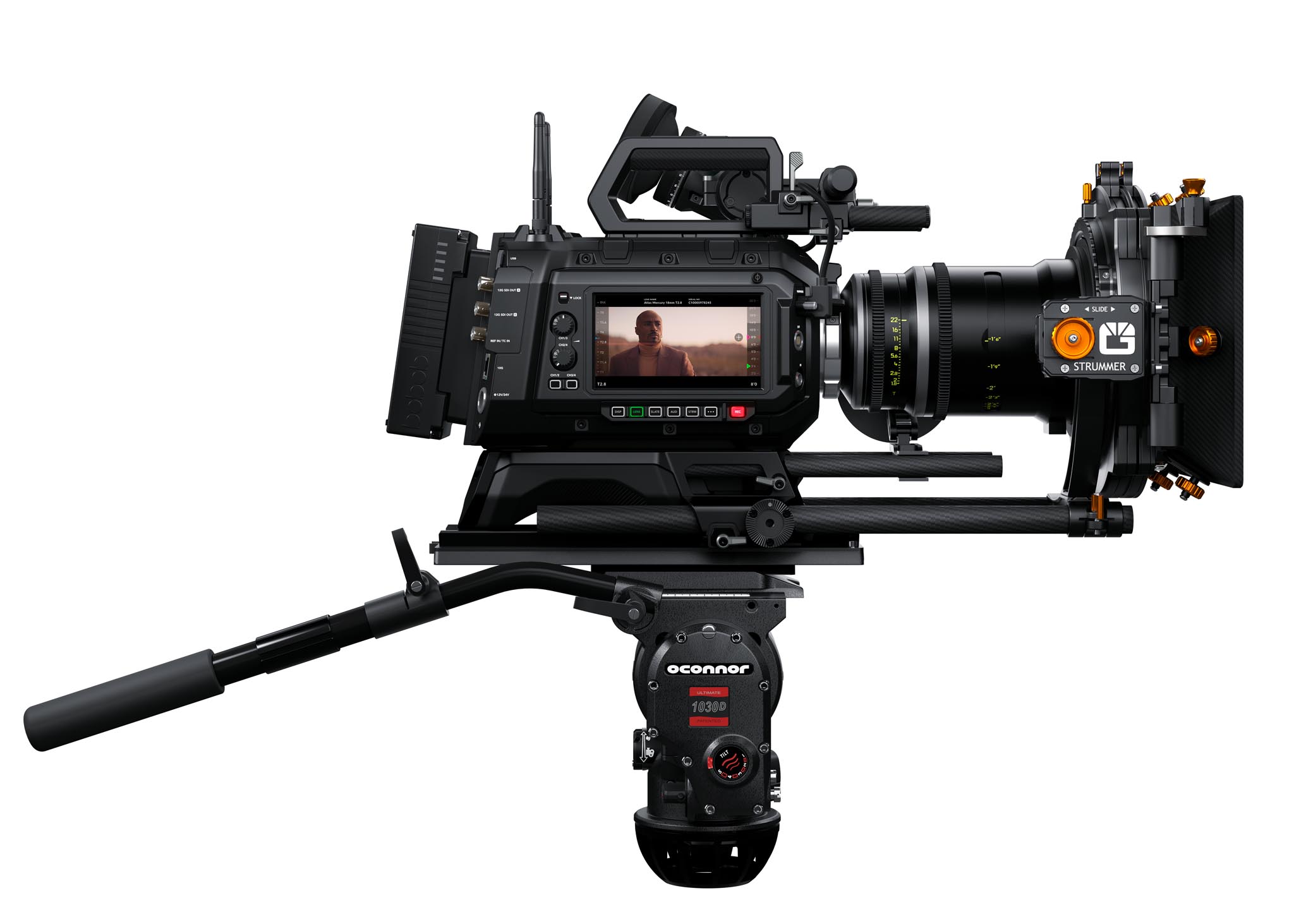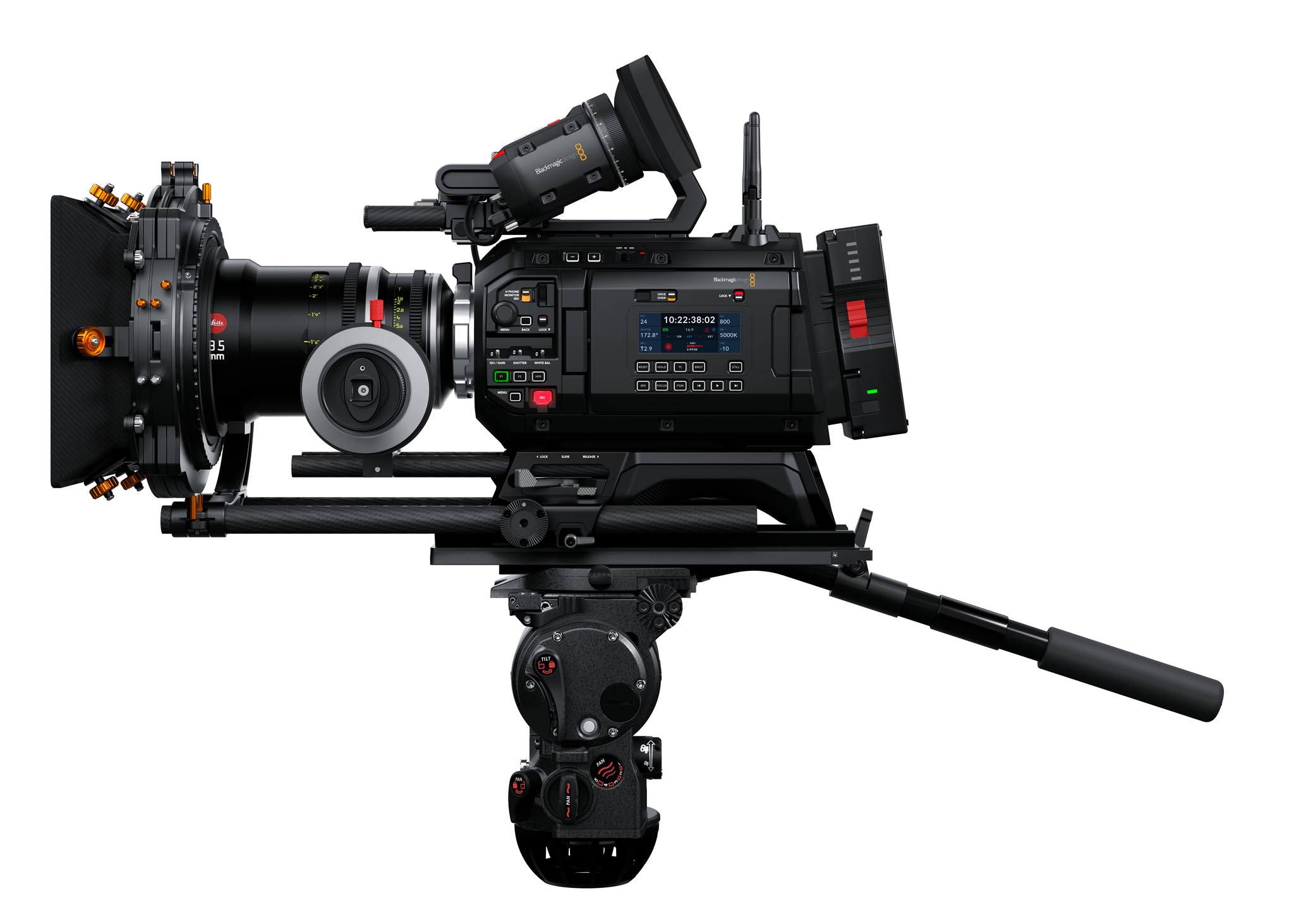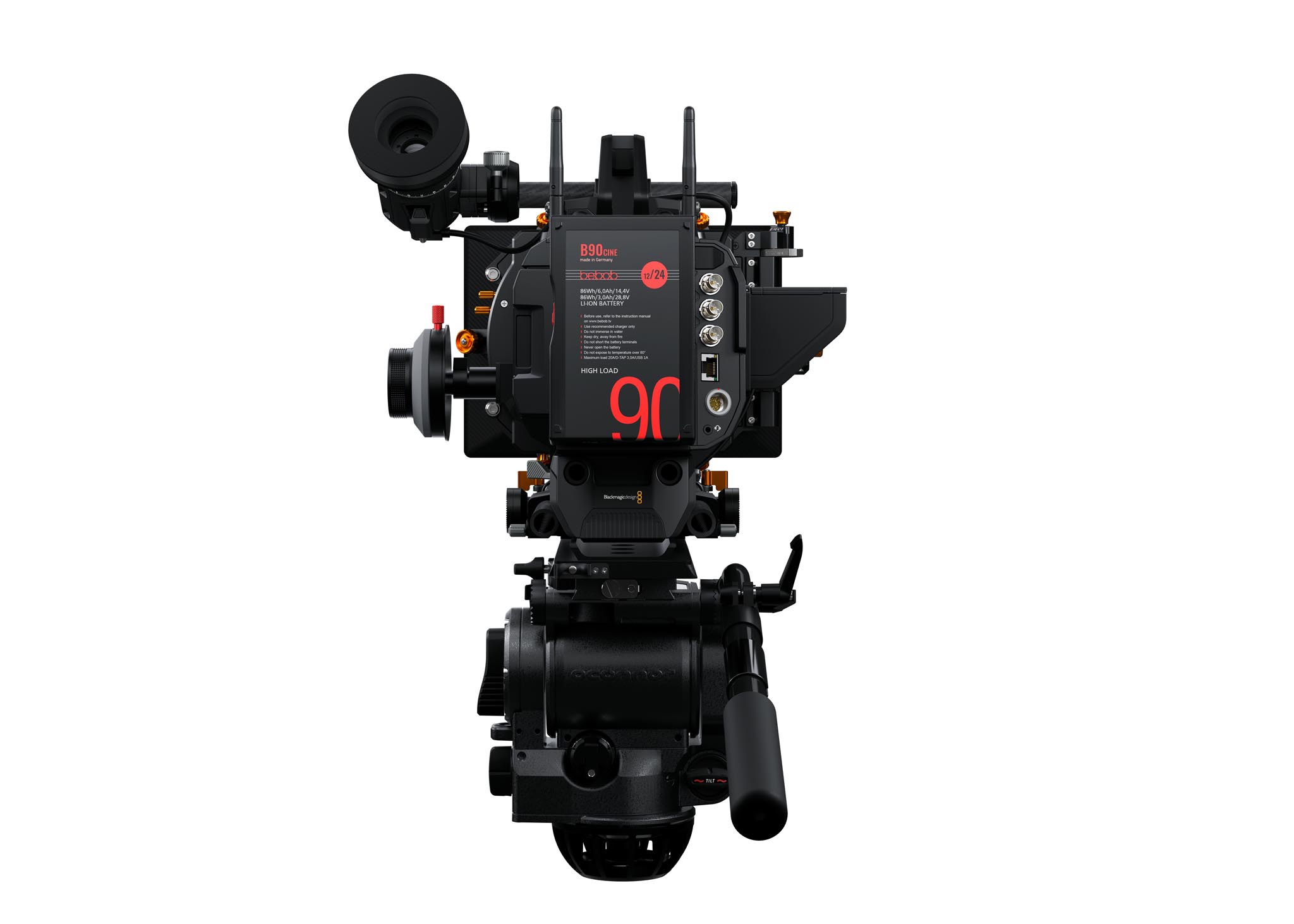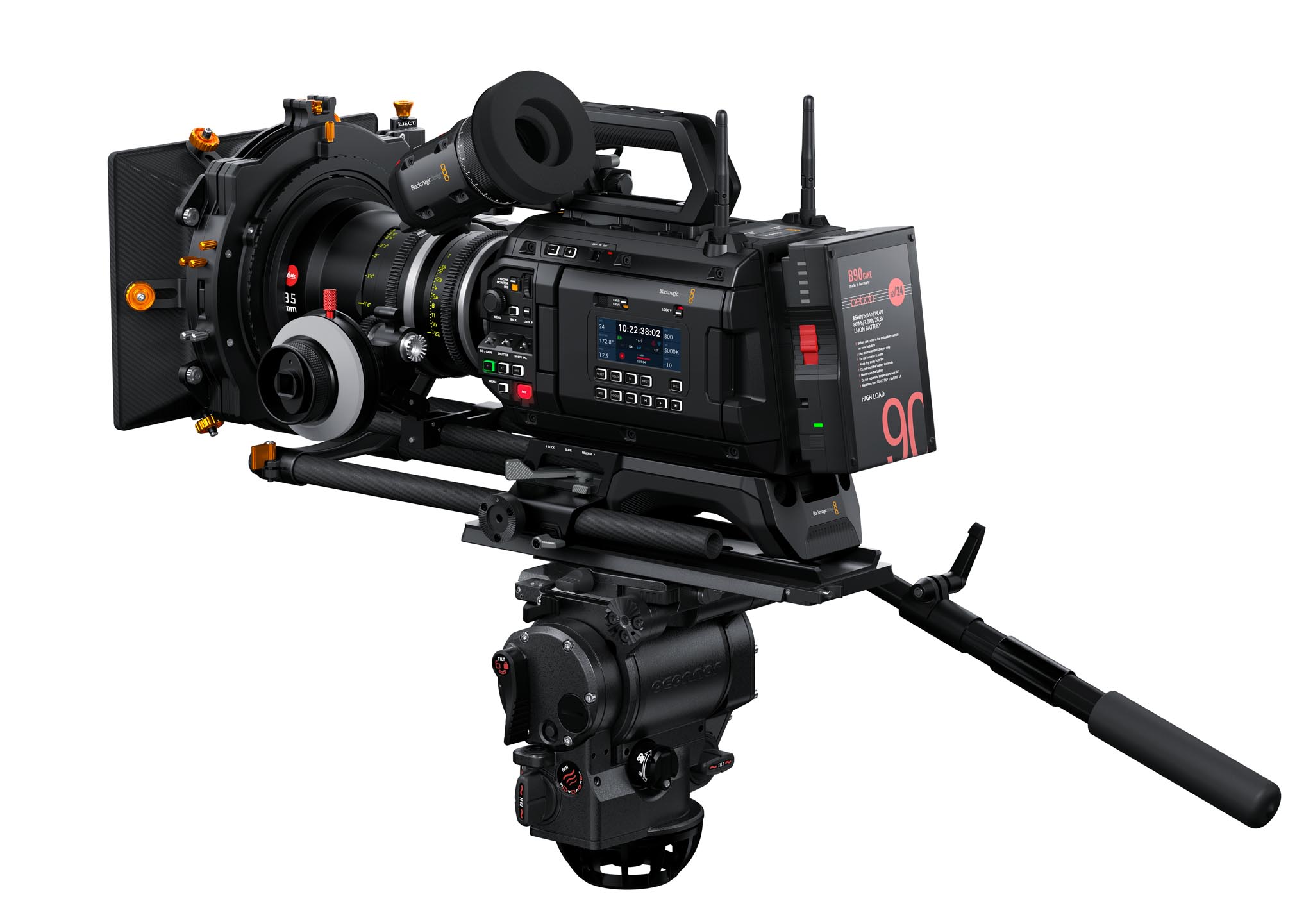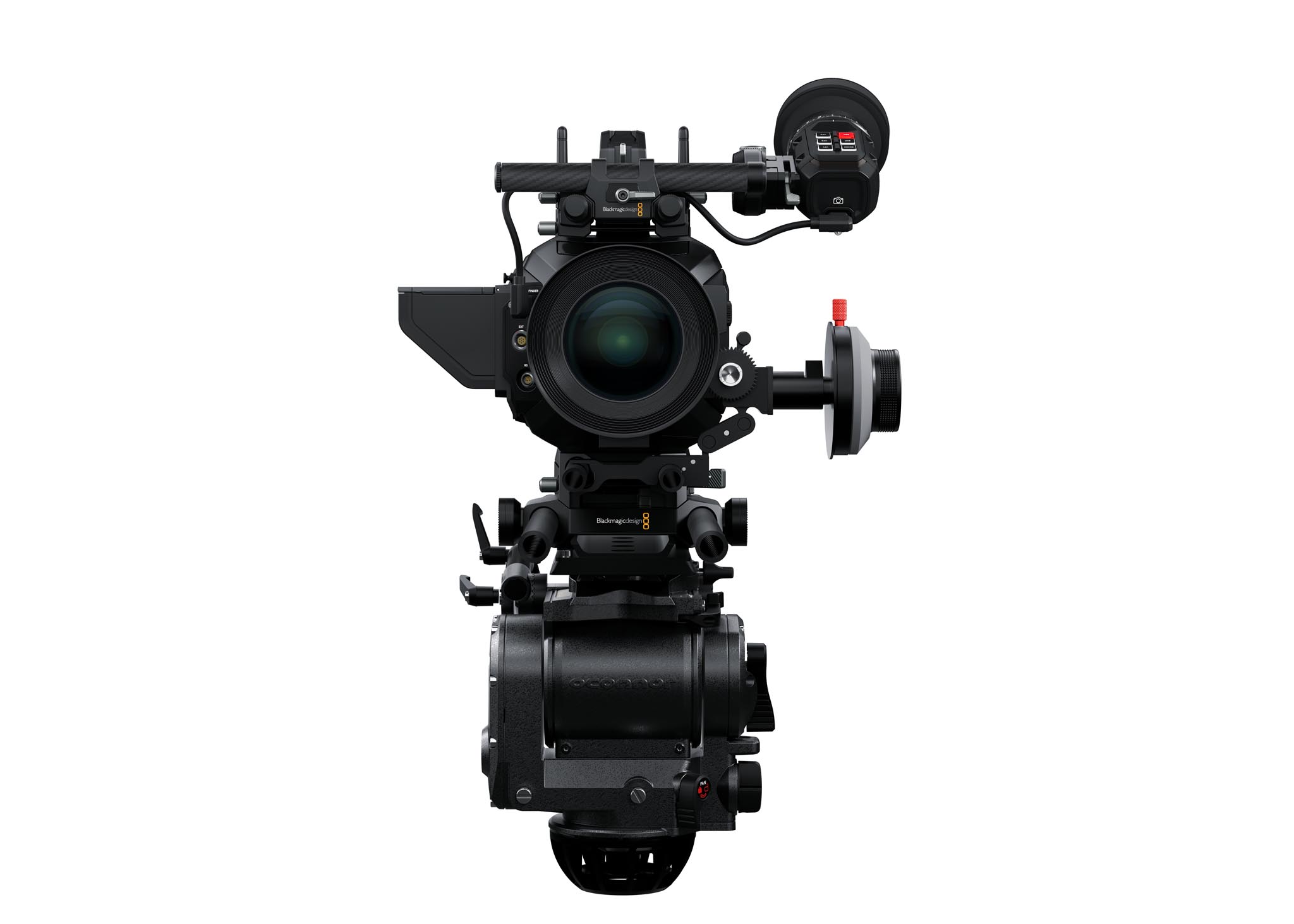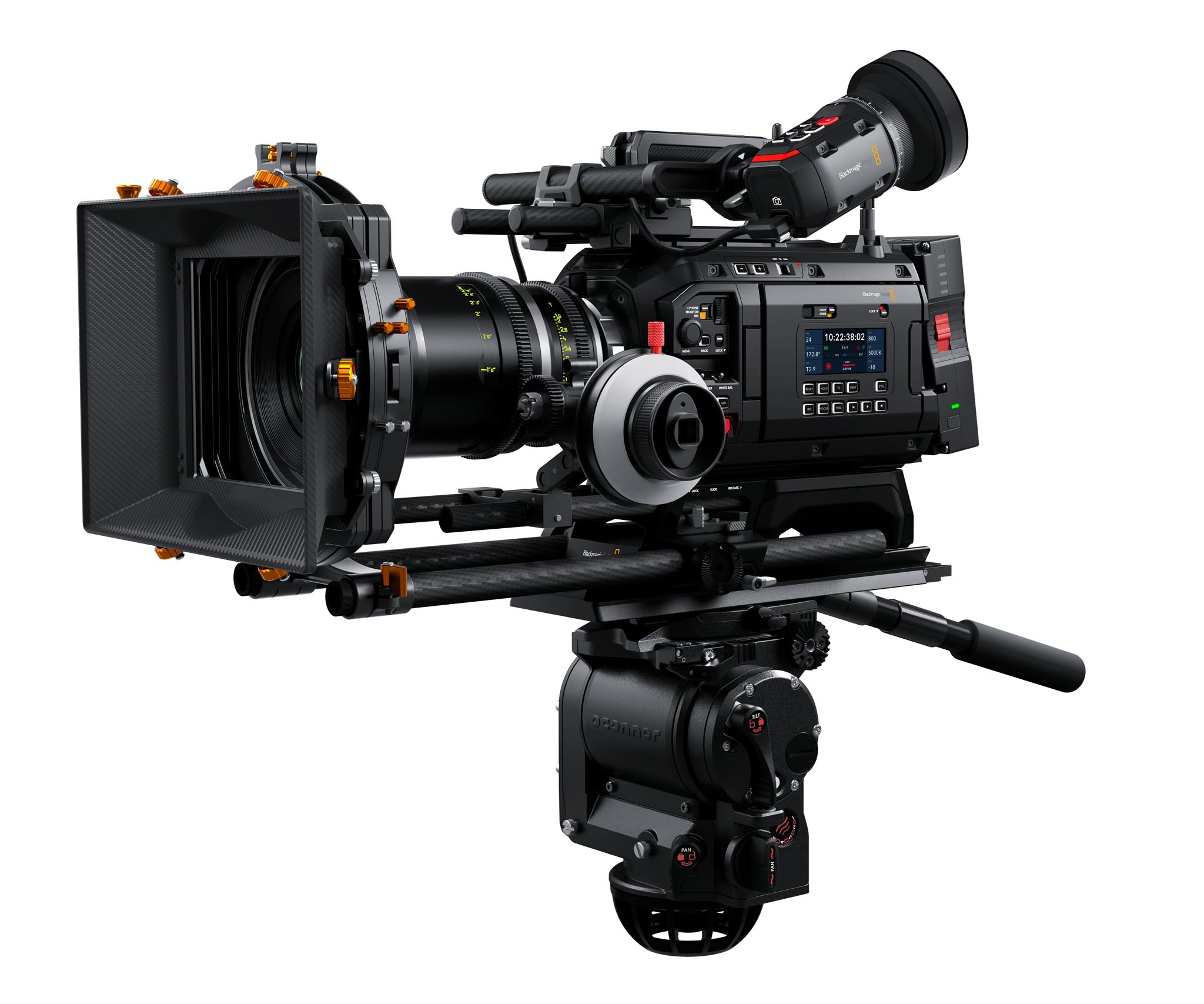“Ladies and Gentlemen, please fasten your seatbelts.” The descent into Las Vegas Airport for NAB can be turbulent as adiabatic or katabatic winds from the nearby Valley of Fire shake the aircraft.
Blackmagic Design also seems to delight in shaking things up at NAB. This year is delightfully interesting with the introduction of their new flagship Blackmagic URSA Cine 12K LF camera.
- Full Frame 12K (35.64 x 23.32 mm) sensor.
- 12,288 x 8,040 effective pixels.
- 80 fps at 12K 3:2 Open Gate. 224 fps at 8K 2.4:1. Wow. etc.
- 16 stops of dynamic range.
- PL Mount. EF Mount included and LPL Mount as accessory.
- Internal IRNDs: Clear, 2, 4 and 6 stops.
- Optical Low Pass Filter.
- 8TB Removable Blackmagic Media Module.
- 6 anamorphic de-squeeze options available in all record formats.
FDTimes was introduced to the URSA Cine 12K LF by Blackmagic’s Business Development Manager for the Americas David Hoffman and Tim Schumann, Senior Product Manager.
David began, “Blackmagic has been making cameras for 12 years now. This time, we wanted to build a high-end digital cinema camera that essentially incorporated all of the knowledge that we’ve gained over the last 12 years and that responded to a lot of the feedback from users. There were no limits on features or costs. We wanted to look at what it was that was going to be a high-end camera, built from the ground up, and not do something that was an iteration or a second generation.”
Wait, wait—has it been 12 years already? It seems like yesterday when Blackmagic Design CEO Grant Petty held aloft their first 2.5K Blackmagic Cinema Camera at NAB 2012 (photo below). It sort of looked like the control stick on an airplane. “It has handles so you can man-up and shoot,” he said. “Or take all the parts off, and use it like a small stills camera.” It was said that he had the camera built because he wasn’t satisfied with the crop of cameras to take his own family videos.
One year later, at NAB 2013, he introduced the new 16mm 2K Blackmagic Pocket Cinema Camera and a Blackmagic Production Camera 4K with a 4K Super35 sensor and global shutter.
NAB 2014. Blackmagic introduced the first URSA camera, named Blackmagic URSA. It had huge, built-in 10″ monitors on each side of the camera. The monitor on the left side folded out. The camera had a Super35 4K sensor, global shutter, 12 stops of dynamic range, and internal dual CFast 2.0 slots for 12-bit lossless compressed Cinema DNG RAW or Apple ProRes recording. You had a choice of PL, EF and B4 mounts—or no mount at all (to be used as a recorder for other cameras).
And so it went, an almost annual progression of innovative cameras. Along the way, many cinematic soothsayers predicted an eventual high-end motion picture camera. Here it is.
David Hoffman continued, “The URSA Cine 12K LF camera is a uniquely new product and a new category. We wanted to base it around a completely new Large Format 12K sensor design. We also wanted to think of it as not only a unique camera but also as part of a system that we have seen developing over the past five or six years. The URSA Cine supports the cloud-based storage and collaborative workflows that have been developed for DaVinci Resolve.
“Let’s begin with the design. Even though it shares some of the design cues from our URSA family, we looked at every component, right down to each screw, and analyzed its purpose. Does it give you the freedom you need and if not, do we need to change or do remove it? For example, we heard that some of the buttons on earlier models clicked too loudly. Now, every button is backlit and silent. Users also requested tool-less capability to attach accessories and change shooting modes: for example, moving the EVF forward or back or putting it on an extension arm. The engineers designed this new camera so you can work with it rapidly and without requiring any tools.
Tim Schumann said, “We developed our own sensor with an entirely new non-bayer color filter array for the URSA Mini Pro 12K. Since this new sensor is a full frame 12K, the pixels are larger so the dynamic range is much higher and is now 16 stops. We’re really proud of what the team has done. It’s a pretty big technical achievement and breakthrough and it’s one of the stepping stones of what we were working towards with the original Super35 12K design — to do something different and to actually come up with a different sensor design, like a new kind of film stock and try and do something outside of the box. The images that we’ve been getting out of this new sensor are just incredible. Last weekend we had the camera out on a Technoscope crane, on a Steadycam, flying in a drone and then also a Mk II geared head and all sorts of different scenarios and the camera has performed really, really well with all those systems. So we’re really happy with it.”
You will be really happy with these things:
High brightness, 5” monitor with full menus and video on both sides of the camera. This idea sort of goes back to the first URSA. Later models removed the camera right side monitor in favor of a Hirth-tooth rosette in the middle. But having a monitor on each side lets camera assistants, DITS and operators check important status parameters such as frame rates, ISO, shutter angle, codec, etc. from any angle – not to mention giving the camera operator the ability to use the EVF or a big monitor for viewing.
The monitor on the camera left (operator’s) side folds out 90 degrees and rotates, so it can be viewed from the front or almost any position. When it’s closed, there’s a small status screen on the outside of basic settings, on the door, or you can flip it around 180º and click it back in so you have bright 5” monitors facing out both sides of the camera.
URSA Cine ships with a native PL mount installed. A locking EF mount also comes with the camera.
Separately an LPL mount is also available as an optional accessory[SH1] . It’s easy to swap mounts with just four 3mm hex screws. The mounts themselves are all individually shimmable.
The camera comes fully kitted in a Pelican case with pre-cut foam. Not a cardboard box. Just add a lens and battery and you’re ready to roll.
It uses a 24V power supply. It has a B-Mount on-board battery plate in back. (The B-Mount battery interface is an open industry standard developed by bebob, endorsed by ARRI and others. It supplies 24V at 15 amps or more. The internal release mechanism of the B-Mount Battery allows for smaller battery plates than with V- or Gold-Mount plates.
Blackmagic indicated that they will have a 12 volt V Lock and a 12 volt Gold Mount plate as well for those who already have batteries but the higher voltage range is really ideal for powering the camera as well as lens motors and multiple accessories. Anton Bauer 26 volt plate will also be possible.
Camera left side
Open the flip-out monitor for access to the media bay. The camera ships with a Blackmagic Media Module 8TB. It’s extremely fast— with 16 lanes of PCI Express.
David explains, “What’s interesting is we’ve built our Cloud Store capability into the camera itself. The media on the drive is immediately available as soon as you stop recording to anyone who is connected via Ethernet as part of the Cloud Store connection. You could connect a Resolve station and be working with the files straight from the camera via 10G Ethernet immediately.
But it also allows you to pull the media mag out and put it into the Blackmagic Media Dock. You don’t have to offload the media. It is immediately available and ready to be edited or graded because it’s high-speed storage with four 10G Ethernet ports. This speeds up the time from acquisition to edit and possibly delivery if you don’t have time to copy the drives. Of course, you will do that and backup as well.
The camera has a new URSA Cine EVF. Tim Schumann explained, “A lot of people liked the image that they got out of the original URSA Viewfinder, but it was limited in terms of ergonomics, in terms of being able to mount it in different places. The new model has soft touch backlit buttons and it works over USB. As you select things, you can see what’s been toggled on and off as the buttons change color, and they’re programmable so you can control all sorts of things in the camera from the viewfinder itself. That’s all set up through the camera’s menus.
“And we’ve done an entire camera ecosystem here. We didn’t want to just release a camera and then have everyone waiting on accessories. We’ve added all the things that we think are important. The viewfinder mounting mechanism is very flexible and versatile. It has a dovetail for you to remove the EVF quickly and easily. We’ve got an extension viewfinder attachment as well that works with standard eyepiece levelers. You get the extension arm with the larger of the URSA Cine kits or if you buy the viewfinder on its own.
“The top handle has a similar dovetail mounting mechanism and you can very quickly and easily remove the entire viewfinder system and the top rods completely.”
“The camera will ship with an URSA Cine Baseplate 19 which works with 19 or 15mm rods, and it works with ARRI standard dovetail plates. When you position its lever in the central position, you can slide the camera backwards and forwards. And, if you push and move the level to the rear position, you can actually lift the camera straight up off the dovetail plate. The lever mechanism is forward of the shoulder pad. There’s an optional lightweight URSA Baseplate 15 as well which has the same dovetail mechanism.
“The Full Frame 12K sensor is quite a technological leap forward from the previous Super35 12K sensor. It has the same DNA but is 35.64 x 23.32mm — 12,288 x 8,040 pixels, which is a 1.5 aspect ratio (3:2) so very versatile for all types of delivery format.”
Every in-camera recording format has the option of anamorphic desqueeze: 2x, 1.8x, 1.66x, 1.6x, 1.5x, and 1.3x available across all formats. The Full Frame, full height 3:2 recording format will be particularly popular for both spherical and anamorphic widescreen.
The Super35 4-perf sized 9K 3:2 and 9K 6:5 record formats are also interesting new ones. There’s also 9K 16:9 and 17:9 which are both basically Super35 3-perf size and the 9K 2.4:1 which is effectively Super35 2-perf.
User interface
Focus Pullers’ delight: There is a UI that displays focus distance, aperture and focus marks just like the new focus tools in the latest version of the Blackmagic Camera app. It reads the lens metadata through the contacts of the lenses that are so equipped. It can also interpolate the full scale off the lens itself, depending on how much lens data is available. You can also choose between Metric and Imperial focus scales. Focus scales and lens data can be sent out to the set via the SDI outputs as well.
The WiFi antennas on the back can also be used for streaming on set–to video village via an ATEM Streaming Bridge locally or even being able to stream to the other side of the world.
Connectors in front
- 7-pin LEMO connector.
- 3-pin Fischer style RS Remote Start-Stop and 24V 2A.
- The Viewfinder port has a locking USB-C connector to supply power and video. The same cable and connections also carry standard USB control for the button presses and menus.
There are three different USB-C cables in the kit: one long cable and two short ones, one of which has a right angle connector at both ends, and the other one has a right angle at one end and a straight connector at the other end, for flexibility in how you want to rig it up.
The 3-pin Fischer connector’s power output is also shared with the nearby 7-pin LEMO connector which has serial protocol to open up camera control via Blackmagic Camera Control REST API with wireless lens control MDRs, etc. It also has 3 pins that mirror the RS connector functions, so, you could make it a second RS connector or you could use it to plug directly into follow focus systems into Lens Motors.
Tim said, “We’re in the early days with this camera and we’ve certainly been talking to those manufacturers already and once we’ve got this camera announced and out there at NAB, we can continue those discussions a bit more.”
Top
- On top right: 2 USB-C connectors under weather-resistant covers.
- On top, rear: 2x WiFi antennas, 2.5 and 5G.
- 2 3-pin XLR audio connectors for Mic, Line or AES audio intput.
Right-rear
- 2 12G SDI BNC connectors. Each is independently configurable. You can send a clean feed out one and a dirty feed with your focus puller’s screen on the other, or the standard heads-up display that you have on all the Blackmagic cameras. You can also switch on or off anything like focus peaking, zebras, false color.
- 1 BNC Connector for Genlock or Timecode.
- RJ-45 10G Ethernet port – For web media management, camera control, Blackmagic Cloud media uploads, and more.
- 2-pin LEMO 12V 1.5A power out for lower voltage accessories
- 8-pin LEMO EXT. 24V DC power input connector (same connector used by ARRI ALEXA Mini, Mini LF)
Blackmagic Media Module
In addition to the 8TB M.2 solid state storage Media module, there will be a 2-slot CFexpress (Type B) module for people who already have CFexpress cards that they are using in their Blackmagic Cinema Camera or other cameras.
Tim said, “In terms of the capabilities of the camera, we wanted to lead with something that did not make excuses about data rates. We needed something that was able to handle absolutely anything that we could throw at it. The Blackmagic Media Module 8TB avoids any kind of bottleneck when recording onto the media and should for many years to come. We will have a 16TB model as well if 8TB is not enough for you.”
David Hoffman said, “When you plug the module into a dock, it’s connected to your network and anyone who’s attached to that network and has clearance can start working directly with the footage. They don’t have to offload the media, they can actually work off the media module itself. That’s part of the whole Cloud Store philosophy that we started a few years ago.
“If you don’t use Cloud Store, you can also work with that media module directly with your DaVinci Resolve. With the 10G Ethernet connector on the back of the camera.”
The media dock has four 10G Ethernet ports on the back. It does not have Thunderbolt connectors.
File formats
URSA Cine 12K LF records Blackmagic RAW internally and also records simultaneous H. 264 proxy files.
Remote control
The familiar Blackmagic Camera Control app will connect to the camera via Bluetooth. You can also connect to the camera via its 10G Ethernet port or Wi-Fi and control the camera remotely with the web-based, configurable REST API. You can also offload media files from the camera via the Ethernet or Wi-Fi.
The camera can also be controlled via the 7-pin LEMO serial connector on the front. This is useful for start-stop and camera control from FIZ Hand Units.
L-Mount Alliance?
The latest Blackmagic Cinema Camera 6K has an L-Mount. Since Blackmagic joined the L-Mount Alliance, I thought maybe it would be lurking underneath the PL or LPL mount.
Tim put that notion to rest, “Not on this model. I’m afraid with the ND filters, it’s probably a stretch to get an L-Mount in there. And, looking at the style and size of the camera, we felt that the mounts that we’ve gone for are the most appropriate.”
I asked how long this camera has been in development and who are the intended users.
Tim said, “It’s the culmination of years of work. When we designed the first Super35 12K sensor, we had this Full Frame 12K sensor in mind as well. They kind of go hand in hand. It has been about four years since the Super35 12K camera was announced.
David said, “The initial idea was to provide a camera for the high-end creator. It would not be a super expensive, only in Hollywood product, but rather for cinematographers who wanted a camera that was incredibly well equipped. It’s going to have a good price point, but it’s really a high-end camera. It is for anyone who wants to go out and have a broad range of capabilities. It’s not a catch all camera, but rather it really is purpose-built for high-end cinematographers and content creators.”
Price
Our discussion led to what a “good price point” meant.
David said, “it will start at around $15,000.”
The video chat connection wasn’t great, and I said, “Oh, $50,000 — that’s fair.”
“No, no,” said David. “$15,000. One-five. The ethos of the company and Grant Petty’s original view is to find ways to eliminate the barrier to entry. We try to narrow the gap between the creator and the audience—remove the cost barrier, access barrier, technological barrier.
“Even though this is a highly sophisticated camera that delivers beautiful images, and has been years in development, it is really easy to use. Because we own our own manufacturing facilities, and design the sensors, we can get cost efficiencies in production that are passed on to the customer. It’s not about reducing the price to undercut anybody in the market. It’s about getting the tool to the creators as efficiently as possible and allowing them to get amazing footage with this camera. ”

